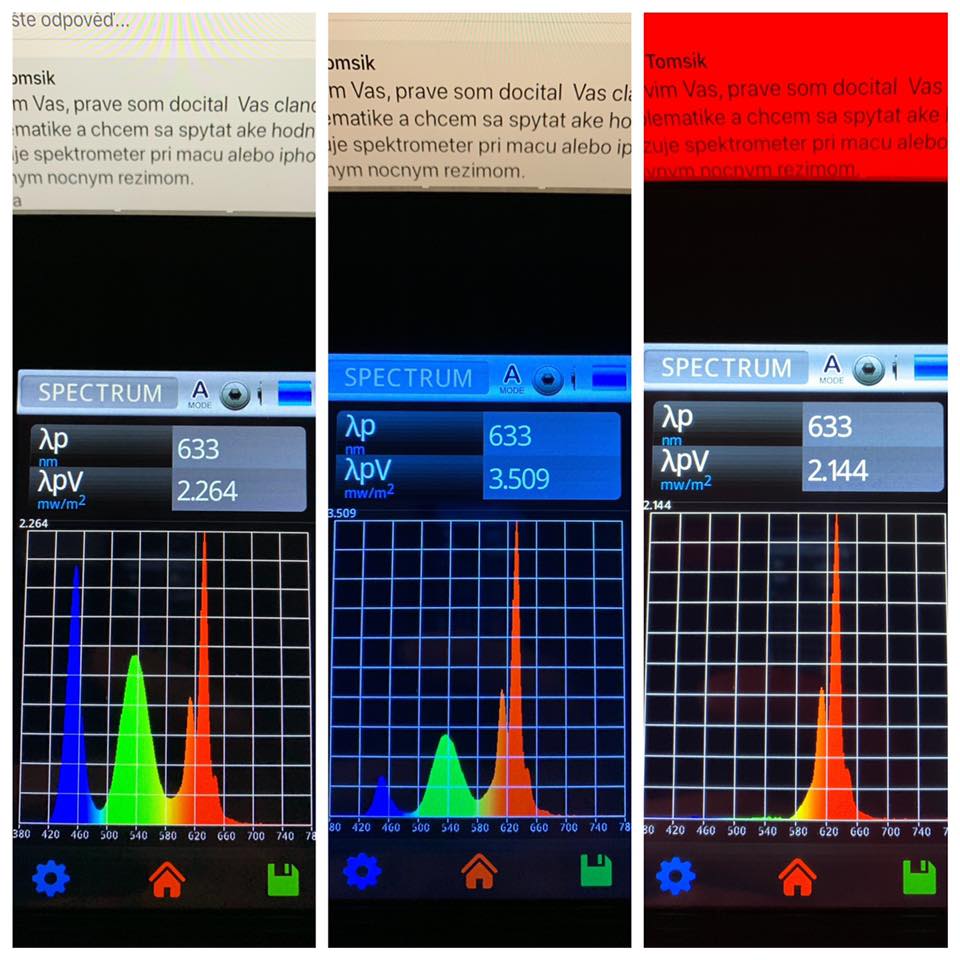Night Shift, f.lux and LCD/OLED display
Facts
- LCD displays (majority of screens, TVs, monitors) use LED backglight at 5500K – with the color spectrum of a sun at mid day. The only thing that diffuses this light into one not containing blue light spectrums is thick piece of red filter (such as laser safety glasses that block wavelengths roughly from 190 to 550 nm). The display itself is not capable of doing that fully.
- OLED displays are made of individual red, green and blue pixels, that are emitting light from themselves – i.e. if such display displays a color that contains no blue color, there is no blue light, because no blue pixels light up.
What does this mean?
- Night Shift, f.lux etc. only make the image easier on the eyes in the evening, but they still do emit blue spectrum of the light (cca 420-500 nm). And that's both on OLED and LED displays by nature.
- Red filter – on OLED displays, it actually blocks the blue color completely, so that the blue pixels do not light up at all and thus we actually get an image that does not contain blue (420-500 nm) and even (less critical) green wavelength (500-580 nm). Thus, the OLED + red filter combination is the only one that can be safely used at bedtime knowing that, at a minimum, the cell phone will not interfere with melatonin secretion. Just beware that 1) if we read an email on that cell phone that we totally screwed up a project at work and I have go explain to the boss in the morning, the quality of sleep is screwed anyway (i.e. in an ideal world, we turn off our cell phones at 7:30pm and go read under a verified light bulb for an hour and a half…)
- Red filter + LED displays? (pre iPhone X) – still contains a lots of both blue and green light. See photos below.
Light spectrums
Comparison of iPhone X: normal / Night Shift / Red Fiter:

References
- spectometer pictures are (c) Hynek Medricky
- take it from the scientists, too: „Across our full study sample, there were no differences in sleep outcomes attributable to Night Shift. For individuals who regularly obtained adequate sleep, abstaining from screen use resulted in better quality sleep than did phone use with Night Shift enabled.“ (study: Does iPhone night shift mitigate negative effects of smartphone use on sleep outcomes in emerging adults?)
- Where to find Red Filter on iOS? --> see here


No Comments